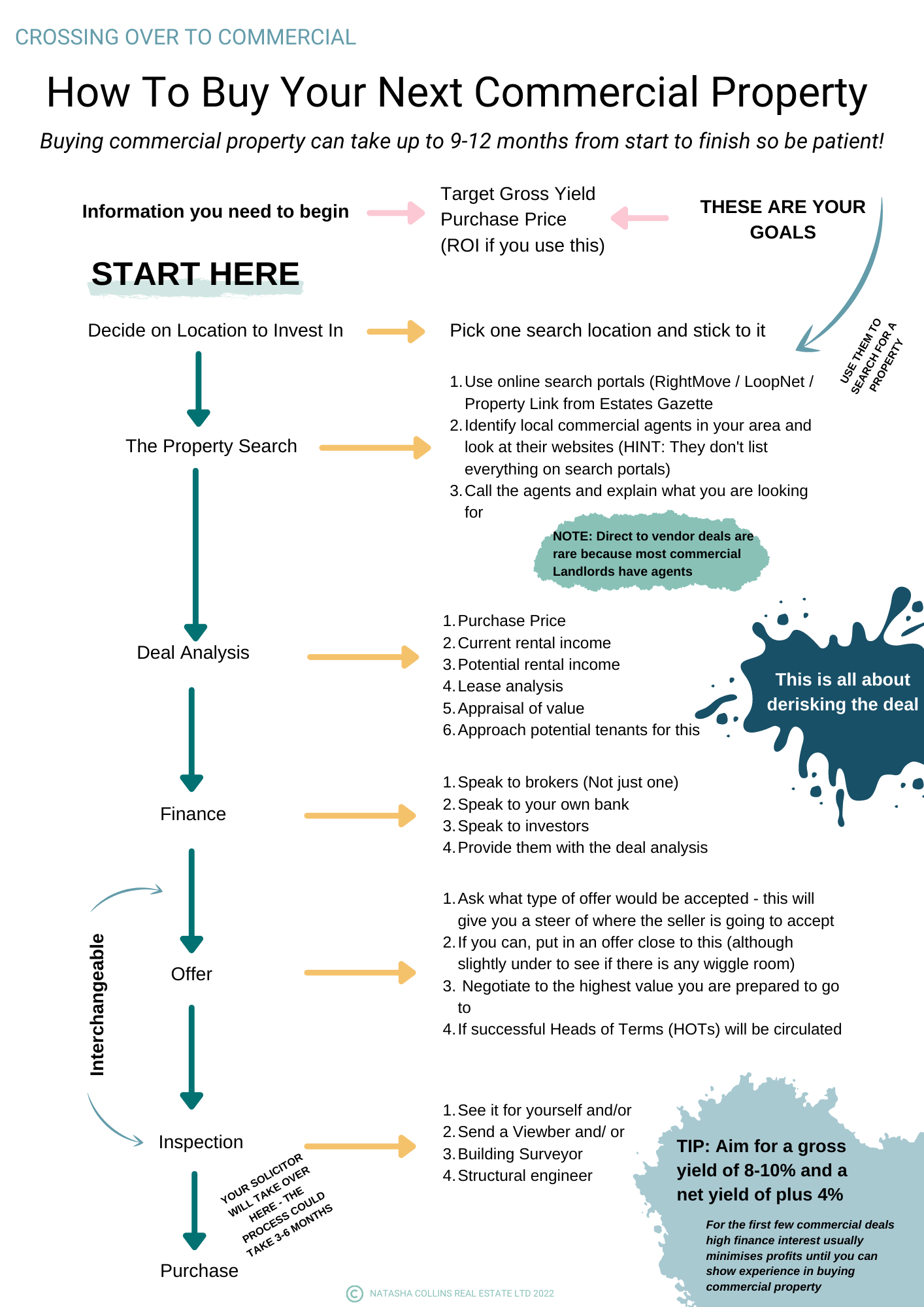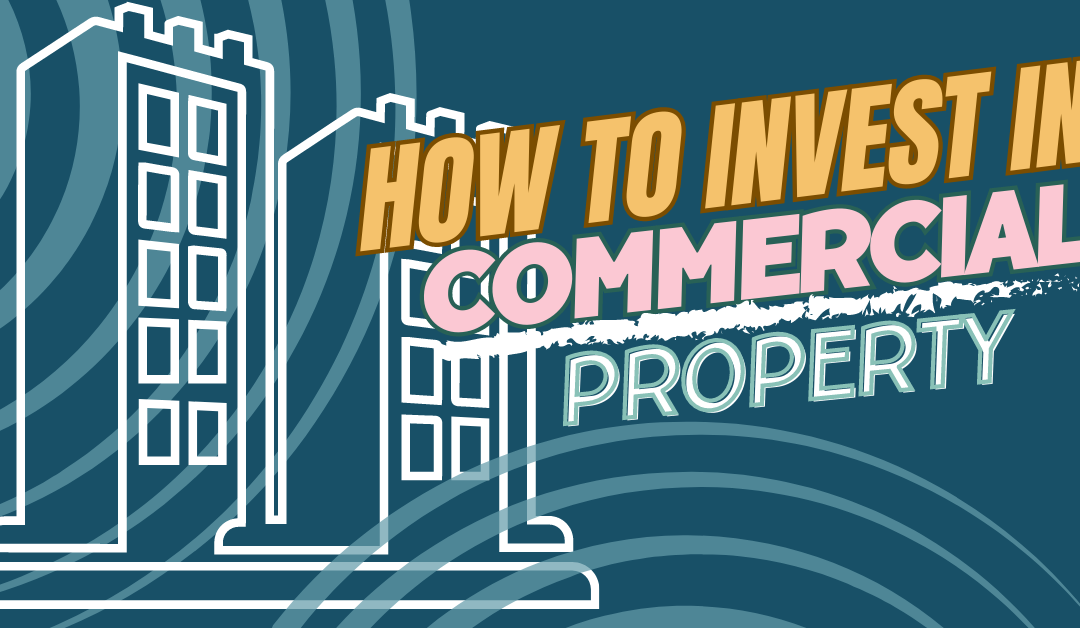Investing in commercial property can be a lucrative endeavor, but it requires careful planning, research, and a systematic approach. In this comprehensive guide, we’ll walk you through the essential steps on how invest in commercial property. Whether you’re a seasoned investor or just starting out, this guide will provide you with valuable insights to make informed decisions and achieve your investment goals.
(I included a flow chart at the bottom of this blog!)
Setting the Foundation: Define Your Goals
Before you delve into the world of commercial property investment, it’s crucial to establish your investment goals. Determine your target gross yield, which typically ranges from 8% to 10% in today’s property market. Additionally, decide on the purchase price you’re willing to pay for a property, taking into account your available capital and potential lending options. These two key factors will serve as the foundation for your investment strategy.
Choose Your Investment Location Wisely
Selecting the right location is paramount in commercial property investment. Focus on one primary search location to simplify your search process and streamline your decision-making. Whether you’re interested in London or the Midlands, opt for a location within an hour and a half’s drive from your home. This radius of around 40 to 50 miles will help you manage property inspections and deal negotiations more efficiently.
Conducting a Property Search
Online search portals are valuable tools for finding potential commercial properties. Platforms like RightMove LoopNet and property link from Estates Gazette offer a wealth of listings to explore. Register for property alerts within your search criteria to receive relevant opportunities directly to your inbox. To keep your investment journey organized, consider creating a separate inbox exclusively for property deals.
Analysing Deals: The Numbers Game
Effective deal analysis is crucial to identifying investment-worthy properties. Evaluate each deal’s purchase price, current rental income, and potential rental income based on lease terms. Examine lease agreements for details on repair responsibilities, insurance, service charges, and rent reviews. Appraise the property’s value and calculate whether the deal aligns with your target gross yield and purchase price.
Exploring Financing Options
If financing is necessary for your investment, explore lending options with brokers, banks, or your existing commercial property lender. Gather information about loan terms, interest rates, and associated fees to incorporate these factors into your deal analysis. Having a clear understanding of your financing options will help you make informed decisions and determine whether a deal is financially viable.
Negotiating and Making an Offer
Engage in negotiations with the seller or their agent to arrive at an agreeable purchase price. Before making an offer, consider conducting due diligence inspections and property surveys to identify potential issues or necessary repairs. Craft your offer to include any conditions or requirements, such as lease negotiations or repairs, to ensure both parties are aligned on the terms.
Navigating the Legal Process
Once your offer is accepted, the legal process begins. Heads of terms will be drafted, typically by the seller’s agent, and circulated among all parties involved. Solicitors will be instructed to handle the exchange of contracts and finalize the sale. Concurrently, compile a comprehensive management pack, including leases, health and safety information, and other pertinent documents. If a service charge is applicable, ensure it is properly handled, either through a managing agent or an established process.
Transitioning Smoothly: After the Purchase
After acquiring the property, initiate a seamless transition for tenants by introducing them to the managing agents responsible for property management. This step ensures efficient communication and a smooth operational transition. With your investment successfully secured, you can focus on maximizing returns while providing a positive experience for both tenants and stakeholders.
Conclusion
When looking at how to invest in commercial property it strategic approach, thorough analysis, and effective execution. By defining your goals, conducting meticulous research, and navigating the various stages of the investment process, you can make informed decisions and position yourself for success in the dynamic world of commercial real estate. With the insights provided in this ultimate guide, you’re equipped to embark on your journey to becoming a successful commercial property investor.
How to Invest in Commercial Property – Flowchart





